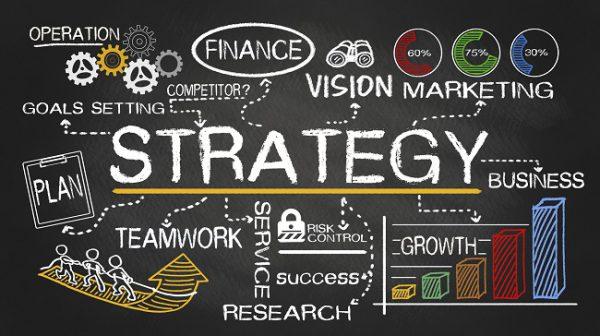In today’s hyper-competitive business landscape, the success of an organization hinges on its ability to attract, nurture, and retain top talent. As industries continue to evolve and consumer demands shift, the need for a robust talent pool has never been more critical. Companies that excel in this area are not only equipped to navigate challenges but also to innovate and drive growth. This article delves into effective strategies for cultivating a strong talent reservoir, encompassing proactive recruitment techniques, targeted developmental programs, and inclusive workplace cultures. By implementing these strategies, organizations can build a resilient workforce that not only meets the current demands but is also poised to tackle future hurdles with agility and expertise. Join us as we explore the essential approaches to enhance your talent acquisition and management efforts, ensuring your business emerges as a leader in its field.
Table of Contents
- Identifying and Attracting Top Talent in a Competitive Market
- Building a Dynamic Employer Brand to Enhance Recruitment Efforts
- Implementing Effective Onboarding and Development Programs
- Fostering a Culture of Engagement and Retention within the Organization
- Future Outlook
Identifying and Attracting Top Talent in a Competitive Market
In today’s competitive job market, attracting top talent requires a multi-faceted approach that goes beyond traditional recruitment processes. Employers must actively brand themselves as desirable workplaces by emphasizing their unique value propositions. Some effective strategies include:
- Enhanced Employer Branding: Develop a compelling narrative about your company culture, mission, and values.
- Employee Advocacy: Encourage current employees to share their positive experiences to draw in potential candidates.
- Targeted Social Media Campaigns: Utilize platforms like LinkedIn and Instagram to reach passive candidates who may not be actively looking for new opportunities.
- Competitive Compensation Packages: Offer attractive salaries and benefits that align with industry standards to lure top performers.
Moreover, it’s crucial to create a streamlined application and interview process that respects candidates’ time and enhances their experience. This includes providing timely feedback and ensuring clear communication throughout the recruitment journey. Integrating technology, such as Applicant Tracking Systems (ATS) and AI-driven recruitment tools, can also streamline candidate sourcing and selection. Consider showcasing key factors in a tabular format to highlight what sets your organization apart:
| Attraction Factor | Description |
|---|---|
| Flexible Work Options | Offering remote work and flexible hours to support work-life balance. |
| Professional Development | Access to training, workshops, and growth opportunities within the company. |
| Diversity and Inclusion | Commitment to fostering a diverse workplace where all voices are heard. |
| Innovative Projects | Opportunities to work on cutting-edge technologies and initiatives. |
Building a Dynamic Employer Brand to Enhance Recruitment Efforts
In today’s competitive job market, cultivating a strong employer brand is essential for attracting top talent. A dynamic employer brand not only reflects the organization’s values but also enhances its reputation among potential candidates. To achieve this, businesses should focus on showcasing their company culture through various channels. Key strategies include:
- Employee Testimonials: Sharing authentic stories from current employees helps humanize the brand and provides insights into the workplace environment.
- Engaging Social Media Presence: Utilizing platforms like LinkedIn, Instagram, and Twitter to highlight company events, team achievements, and workplace benefits can significantly boost visibility.
- Consistent Messaging: Ensure that all recruitment materials align with the company’s core values and mission to create a cohesive narrative that attracts the right candidates.
Another vital component in building a compelling employer brand is leveraging data-driven insights to refine recruitment strategies. By analyzing metrics related to employee satisfaction, turnover rates, and candidate engagement, organizations can identify areas for improvement. This approach can include:
| Metric | Importance |
|---|---|
| Employee Retention Rate | Indicates employee satisfaction and organizational stability. |
| Time to Fill | Measures recruitment efficiency and can help to optimize hiring processes. |
| Cultural Fit Ratings | Assesses alignment between candidates’ values and company culture, improving long-term retention. |
By integrating these strategies into their recruitment efforts, organizations can not only attract a diverse talent pool but also foster a positive brand image that resonates with potential hires.
Implementing Effective Onboarding and Development Programs
Effective onboarding and development programs are crucial for maximizing employee engagement and retention. A well-structured onboarding process not only helps new hires acclimate to their roles but also instills a sense of belonging within the organization. To achieve this, consider integrating the following elements:
- Comprehensive Orientation: Introduce employees to the company culture, values, and mission.
- Mentorship Opportunities: Pair new hires with seasoned employees to facilitate knowledge transfer and support.
- Ongoing Training: Provide access to continuous learning opportunities, including workshops and online courses.
- Regular Feedback: Encourage open communication and frequent check-ins to assess new employees’ comfort levels and performance.
In addition, investing in professional development is paramount for nurturing talent within your organization. Aligning training initiatives with employees’ career aspirations not only enhances skills but also boosts morale. Consider implementing:
| Development Initiative | Objective |
|---|---|
| Leadership Programs | Prepare employees for future leadership roles. |
| Skill Development Workshops | Enhance specific skills relevant to team goals. |
| Cross-Departmental Projects | Foster collaboration and a broader understanding of the business. |
By integrating these approaches, organizations can cultivate a robust talent pool that is motivated, skilled, and aligned with the company’s vision.
Fostering a Culture of Engagement and Retention within the Organization
Creating an environment where employees feel valued and supported is crucial for enhancing engagement and retention. Organizations can achieve this through various strategies that focus on employee well-being and inclusivity. For instance, implementing regular feedback mechanisms ensures that employees’ voices are heard. In addition, providing opportunities for professional development, such as mentorship programs and workshops, fosters a sense of belonging and growth. Companies should also promote work-life balance by offering flexible work arrangements and ensuring that employees have access to necessary resources for mental health and well-being.
Moreover, recognition and reward systems are instrumental in driving employee morale and commitment. Organizations can adopt approaches like employee appreciation programs or team-building activities that acknowledge individual and team contributions. Incorporating a system of peer recognition allows employees to celebrate each other’s achievements, reinforcing a collaborative culture. To visualize the impact of these strategies, consider the following table illustrating the relationship between engagement initiatives and retention rates:
| Engagement Initiative | Retention Rate Increase |
|---|---|
| Regular Feedback Mechanisms | 15% |
| Professional Development Opportunities | 20% |
| Recognition Programs | 25% |
| Flexible Work Arrangements | 30% |
Future Outlook
cultivating a robust talent pool is essential for organizations aiming to thrive in today’s competitive landscape. By implementing a multifaceted strategy that includes proactive recruitment, continuous employee development, and fostering a strong organizational culture, businesses can attract and retain top talent that aligns with their long-term goals.
As the workforce landscape continues to evolve, adapting these strategies will not only enhance your organization’s immediate capabilities but also ensure sustainable growth and innovation. Ultimately, investing in your talent pool is an investment in the future of your business. By prioritizing talent cultivation, companies can position themselves as leaders in their respective industries, ready to meet challenges and seize opportunities with confidence.






